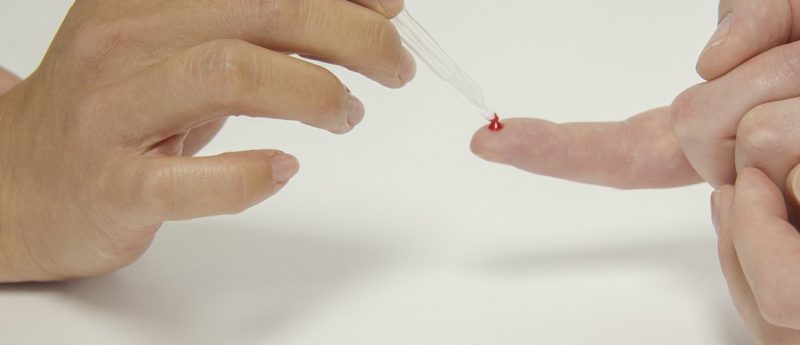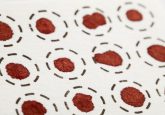Portable nanofiber lab-on-a-stick monitors blood coagulation at home

Researchers from the University of Cincinnati (OH, USA) have developed a paper-based blood screening test. The portable diagnostic uses nanofiber technology to detect blood clots in patients’ blood – the researchers suggest that the test could be performed by patients at home, offering a simple solution for patients on blood-thinning medication to monitor blood coagulation levels between hospital appointments.
Blood clotting represents a significant health risk for millions of patients, for example those with hypertension, cardiovascular disease, congestive heart failure, kidney disease and other disorders. Those on blood-thinning medication must be monitored carefully as an incorrect dosage can cause ischemic or hemorrhagic strokes if not detected quickly.
This new device, announced at the 8th International Conference on Porous Media and Annual Meeting of the International Society for Porous Media (9–12 May 2016, Cincinnati, OH, USA), will allow patients to monitor blood coagulation levels at home.
“We have developed a blood screening device for patients on medications like Coumadin®, warfarin or other blood thinners who need to monitor their blood-clotting levels on a regular basis,” explained Andrew Steckl, lead researcher. “Patients can soon monitor their blood coagulation characteristics from home quickly and painlessly before making needless trips to the lab or hospital.”
The lab-on-a-stick device employs nanofiber membranes and paper-based porous materials, which are encompassed within a plastic cassette. With a drop of blood, the device is able to detect the blood-clotting potential of the patient’s blood. It will detect any major changes in coagulation potential instantly, although smaller fluctuations – for example due to food intake – will not register.
The team hope that the device could act as an early warning system, rather than as a replacement for hospital visits. It is designed to give patients the ability to monitor blood coagulation levels independently, providing them with accurate information to bring to a physician during checkups.
Steckl commented: “This simple test is not intended to replace the very careful and accurate measurements that get accomplished in a laboratory facility, but at a relatively minimal cost a patient can do this on their own between scheduled visits or when in doubt. And it shouldn’t require a caregiver, as most patients can perform this test quickly on their own.”
The researchers suggest that the lab-on-a-stick could be utilized by patients with an inherited blood clotting disorder to detect high or low levels of coagulation quickly, giving them time to contact a medical professional. Additionally, the device can be calibrated to a particular condition specific to the patient by using different porous membranes.
“By identifying potential blood-clotting problems early enough, we hope to prevent potential injury or death and the exorbitant associated costs,” added Steckl. “By shifting from what were once mandatory expensive laboratory tests to using more in-home screening tests, patients can take more control of their lives, reduce healthcare costs and ultimately save more lives.”






